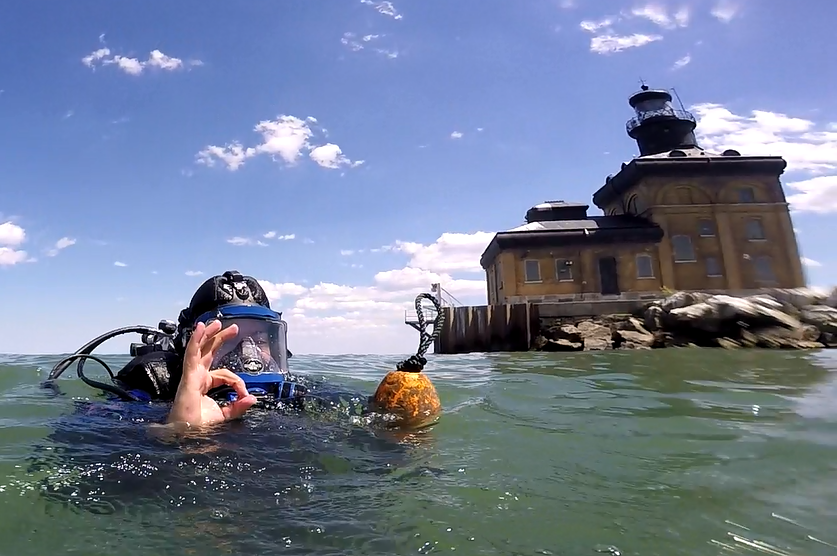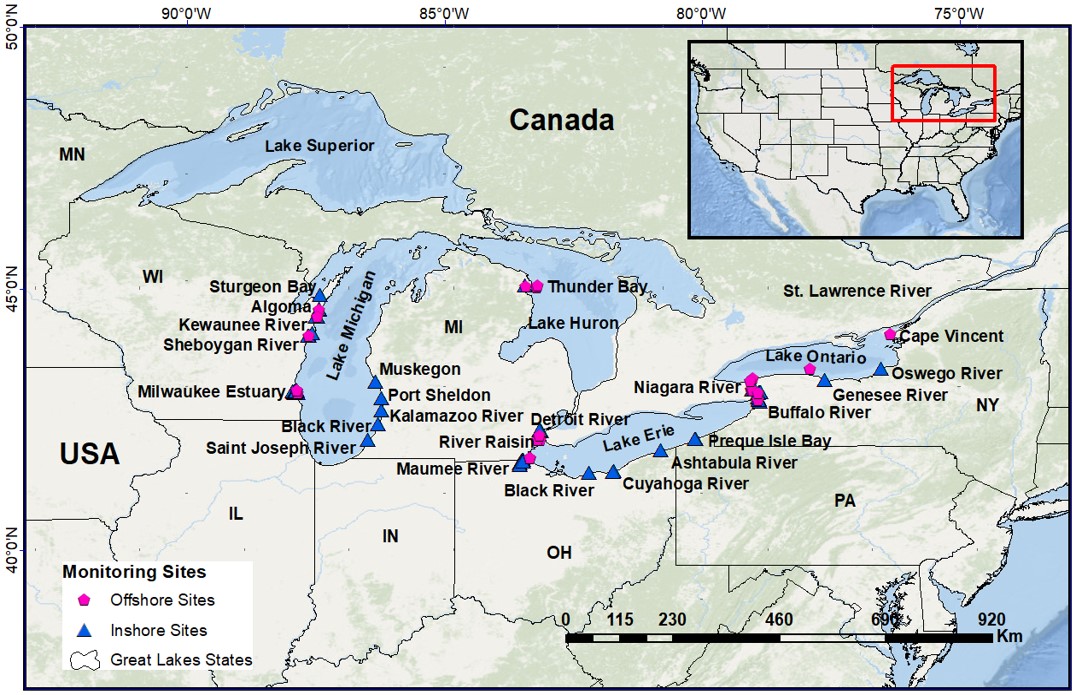
Scientists with NCCOS’ Mussel Watch Program published a retrospective assessment of per- and polyfluoroalkyl substances (PFAS) in the Great Lakes, based on mussel tissue samples collected in the region from 2013 to 2018. Bivalve shellfish, such as mussels, serve as ideal indicators of chemical pollution because they tend to bioaccumulate pollutants from the large amounts of water they filter, they have limited mobility, and they are found throughout the U.S. coastal zone.
PFAS are a large group of manufactured chemicals that have been used since the 1940s in a variety of consumer and industrial products, including electronics, insecticides, and fire-fighting foams. They are often found in surface coatings that repel oil, grease, water, and heat. PFAS are highly resistant to degradation, and their persistence in the environment poses risks to both people and animals.
Water quality management plans for the Great Lakes, developed jointly by the U.S. and Canada, recognize that there is a lack of data about PFAS to make informed decisions. Mussel Watch’s contaminant database, one of the largest for the Great Lakes, offers the region a way to meet its PFAS information needs.
The new study leverages monitoring data collected from 2013 to 2018 to assess the occurrence, magnitude, and spatial distribution of PFAS across the Great Lakes. The findings will help inform the International Joint Commission’s efforts to address harmful substances affecting water quality and human health, and guide future binational actions between the U.S. and Canada.
The U.S. has already begun phasing out PFAS, with many states now banning their use. Scientists are also addressing the problem by developing new technologies that can break down PFAS chemicals. For example, NCCOS scientists patented a technology that uses ozone to destroy PFAS in drinking water. The newly patented method is now highly desired by municipal water treatment facilities, and the NCCOS team has plans to apply the technology at a large-scale facility.
Since it began in 1986, the Mussel Watch Program has collected and analyzed oysters and mussels as surrogates for water pollution and bioaccumulation from a network of sites across the coastal United States. Mussel Watch is the longest running continuous contaminant-monitoring program of its kind in the nation, and its work is authorized by the National Coastal Monitoring Act, and the Marine Protection, Research, and Sanctuaries Act.

